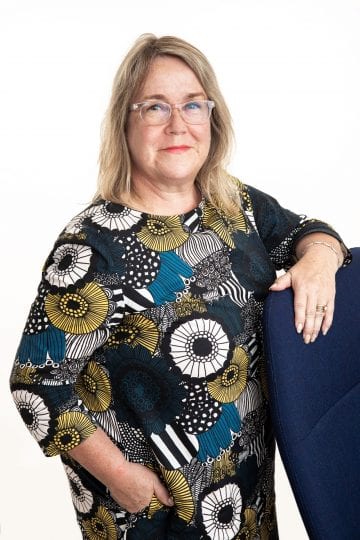Climate change and international shipping

Anita Mäkinen,
Adjunct Professor, PhD,
Chief Adviser to the Director General of Maritime Sector,
Finnish Transport and Communication Agency TRAFICOM,
Finland
I was pleased to celebrate, in person, in December 2015, the adoption of the Paris Agreement with the long term temperature goal to hold global average temperature increase to well below 2°C and pursuing efforts to limit the temperature increase to 1.5°C above pre-industrial levels. Last autumn, in 2018, the Intergovernmental Panel on Climate Change (IPPC) launched its report with a clear message: to limiting global warming to 1.5°C would require “rapid and far-reaching” transitions e.g. in transport.
The Third IMO GHG Study 2014 has estimated that GHG emissions from international shipping in 2012 accounted for some 2.2% of anthropogenic CO2 emissions and that such emissions could grow by between 50% and 250% by 2050 mainly due to the growth of the world maritime trade. Therefore, shipping can play an important role in reaching the global GHG emission reduction goals.
International shipping and aviation were excluded from the Paris Agreement, and mandate was given for both the International Civil Aviation Organization (ICAO) and International Maritime Organization (IMO) to set targets and goals of their own to decrease GHG emissions from the respective sectors.
Accordingly, the IMO’s Marine Environment Protection Committee (MEPC) adopted in April 2018 the Initial IMO´s Strategy on the reduction of greenhouse gas emissions from ships, setting out a Vision to reduce GHG emissions from international shipping and, as a matter of urgency, phase them out, as soon as possible in this century. Furthermore, the Initial Strategy envisages, for the first time, a reduction in total GHG emissions from international shipping, which, should peak as soon as possible, and to reduce the total annual GHG emissions by at least 50% by 2050 compared to 2008.
Prior to the adoption of the Initial IMO´s GHG Strategy, the energy-efficiency requirements of ships were adopted by IMO in 2011. All new ships need to be build according to the vessel type specific Energy Efficiency Design Index (EEDI). The requirements of EEDI Index has been strengthened in 2019 for some types of vessels such as gas carriers, container ships, general cargo ships, LNG carriers and cruise passenger ships having non-conventional propulsion. And we continuing our discussions at IMO if further strengthening will be needed. As all the ships under the Finnish Flag have an ice class, it is important that the special requirements for the ice class of the ship (e.g. engine power) are taken into account in EEDI calculations.
Furthermore, it is mandatory for all ships to have the Ship Energy Efficiency Management Plan (SEEMP), which is an operational measure that establishes a mechanism to improve the energy efficiency of a ship. The SEEMP urges the ship owner and operator at each stage of the plan to consider new technologies and practices when seeking to optimize the performance of a ship.
For the reason the shipping industry has not perhaps yet capitalized the full potential of new technology and communication tools, Finland is now globally promoting digitalization and automation of shipping and cargo operations together with other measures to reduce GHG emissions.
In IMO we have developed the Data Collection System (DCS) to collect data on used amount of fuel oil/alternative fuel types and set of other parameters on annual basis to calculate the total amount of GHG emissions introduced by shipping. The year 2019 is the first year when all shipping companies globally need to collect the data of their ships and report it both to the IMO and to the flag state.
We do have a similar kind of legally binding system in place in EU called Monitoring, Reporting and Verification (MRV). Last year 2018 was the first year for the collection of data on used fuel oil and several other parameters. During the Finnish EU Presidency this autumn, our goal is to finalize the process to harmonize these two systems of IMO and EU.
After the adoption of the IMO´s Initial GHG Strategy, we are now in a process to adopt short-term and medium-term measures to implement the Strategy even prior to 2023 when the Strategy will be revisited for update.
One of the low hanging fruits that has been discussed in this context is slow steaming. However, we need to consider carefully pros and cons, when deciding, if this is an appropriate option for short sea shipping in the Baltic Sea. For our Mare Nostrum alternative fuels, such as LNG, methanol, fuel cells (hydrogen and methanol), and alternative sources of energy like wind (rotor sails) and solar energy could be seen as key solutions. Additional measures could be optimized voyage planning, optimization of the utilization of cargo carrying capacity and improved energy efficiency of the whole chain of shipping including port activities such as shore power and efficient cargo handling.
It is important to remember that as we are in the same boat on the same globe, we need to do our outmost to reduce GHG emissions from shipping, which is, indeed, not as free as some people consider it to be.
Email: anita.makinen@traficom.fi
Expert article 2556
